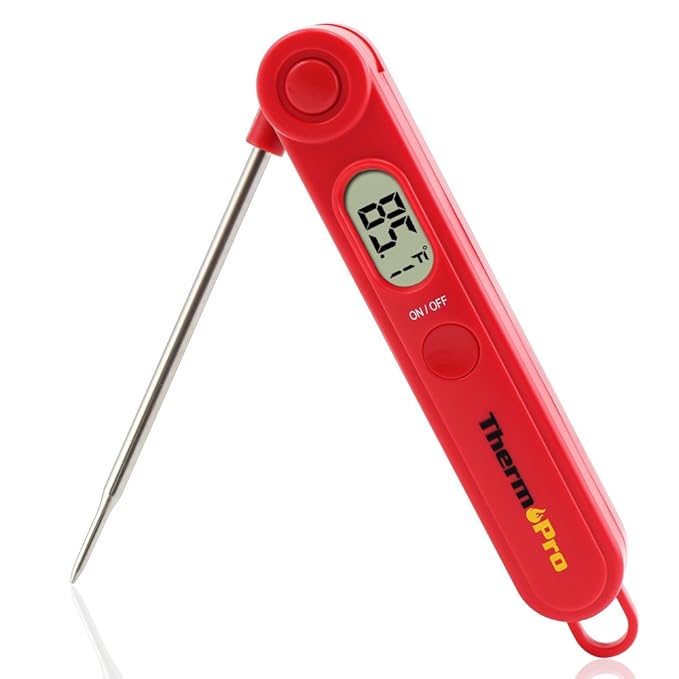
Protecting yourself from a foodborne illness like salmonella at your 4th of July BBQ should be of high priority, but what are the best ways to keep pork and poultry bacteria-free and safe to eat? How long should you cook chicken? And what’s the best way to handle and store chicken, pork, and poultry to avoid foodborne illness?
In the week leading up to the 4th of July holiday roughly 700 pounds of chicken is purchased for grilling. That’s a whole lot of potential for marinated, dry-rubbed, and grilled deliciousness but it’s also a whole lot of potential foodborne disease—*cue Debbie Downer clip*.
Related Reading: 9 Essential Grilled (& Marinated) Chicken Recipes for Summer
These serious foodborne bacterial infections see a spike every summer, according to the USDA, a result of warm weather which allows bacteria to multiply faster, and inconsistent cooking and storage conditions like at picnics and backyard BBQs—but according to a recent CDC report, the uptick in foodborne illnesses may be even more severe in 2019.
The Centers for Disease Control and Prevention reported an increase in cases of foodborne illnesses last summer, caused by infection from Campylobacter and salmonella—two of the most frequent foodborne infections often contracted via undercooked chicken, poultry, and pork. Authors of the report, published in April 2019, examined data from 10 states on about 26,000 laboratory-confirmed foodborne illnesses in 2018 (including 120 deaths). Campylobacter caused about 9,700 illnesses (up 12 percent from the mean in 2015-17), while salmonella caused 9,100 illnesses (a 9 percent rise over the same period).

How to Protect Yourself
Foodborne illness is serious, but there is certainly no need to panic. The good news is you can take a few very simple steps and follow some rules regarding food handling and cooking practices that will reduce the risk of foodborne illness and keep your friends and family safe from salmonella and Campylobacter.
When purchasing chicken or pork, for instance, FoodSafety.gov suggests the following tips…
Choose cold packages that are intact.
Make sure they feel cold, too. If possible, put them in a plastic bag so leaking juices won’t drip on other foods.
Pick up meats last.
Make fresh meats the last items to go into your shopping cart. Be sure to separate raw meat from ready-cooked items in your cart. And if you’re getting meat delivered, make sure it goes straight into the fridge upon arrival.
Related Reading: The Best Meat Delivery & Subscription Services
Once you’ve got the meat home, Fight Bac! Partnership for Food Safety Education is out with helpful food safety, handling, and cooking tips to avoid bacteria. “The basics of clean, separate, cook, and chill will reduce the risk of illness from harmful germs like Campylobacter and salmonella,” says Shelley Feist, executive director of the non-profit organization.
Wash your hands—that means everyone.
Everyone at the gathering should wash their hands with soap and water before and after handling food, not just the grill master.
Related Reading: Should You Rinse Meat Before Cooking It?
Keep food refrigerated and cold.
Always keep food refrigerated as close to cooking time as possible. For picnics and BBQs keep your (seperate) raw meat cooler filled with ice, so picnic perishable foods stay chilled to 40 °F.
Related Reading: 10 Stylish Coolers for Summer 2019
Use separate plates.
Never place cooked food on a plate that previously held raw meat, poultry, or seafood. Be sure to have plenty of clean utensils and platters on hand.
Always use a food thermometer.
Measuring the internal temperature of grilled meat and poultry is the #1 way to know your poultry is cooked through and thus safe to eat. Chicken/poultry should always be cooked to 165 degrees Fahrenheit (74 degrees Celsius).
ThermoPro TP03 Digital Instant Read Meat Thermometer, $12.99 on Amazon
A quality, affordable meat thermometer to keep your family safe.
Print a temperature chart.
Print and hang this helpful guide on your refrigerator or out by the grill, so there is no confusion as to when different meats are cooked through and safe to eat.
Read More: Beware of These 10 Hidden Kitchen Hazards to Your Health
from Food News – Chowhound https://ift.tt/2Jhw8vI
via IFTTT


No comments:
Post a Comment